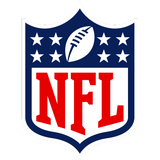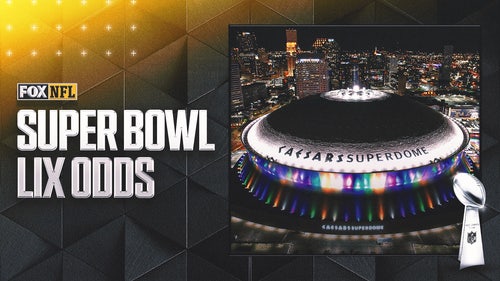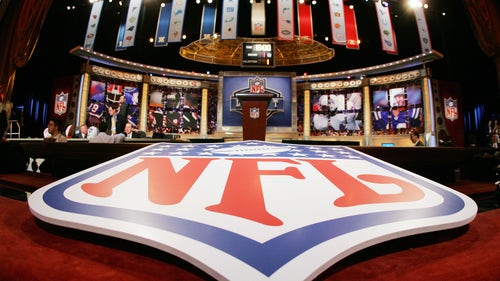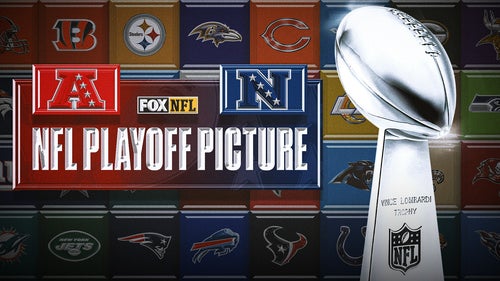
Vikes owners hint at retractable roof
The Metrodome always felt like a rental property for Zygi and Mark Wilf, two New Jersey real estate developers who purchased the Minnesota Vikings in 2005 with the hopes of moving out of the place as quickly as possible.
Now the Wilf brothers will have a home of their own, hopefully by the 2016 season.
One day after winning their seven-year fight for a new stadium, the Vikings owners started to lay out their vision for the $975 million project they hope will serve as a recruiting tool for free agents for decades.
They appear to be leaning toward footing the bill for a retractable roof, which could help them bring a Major League Soccer franchise to Minnesota. They also see a stadium and plaza with cutting-edge technology and lots of open spaces for fans to congregate.
''We're going to try to get the maximum number of features within the budgets that we can make this a facility that is going to be exciting to the fans,'' Mark Wilf said Friday. ''We know it's a competitive landscape to attract our fans to the facility and we're going to want to make it something special. To the extent that (a retractable roof) can get there, we're going to try to do it.''
The Vikings and the NFL are contributing $477 million toward the project, with $348 million coming from the state and $150 million from Minneapolis. If the Wilfs want a retractable roof, they will have to fork over even more money. State lawmakers put a provision in the bill that allows for a retractable roof, but the Vikings would have to pay the extra cost.
The price tag of such a feature isn't immediately known because the architects have yet to be hired, but Zygi Wilf has long been keen on the idea of an open-air stadium like his beloved New York Giants had in the Meadowlands when he was younger.
''If it's snowing very, very hard, we'll open up the roof,'' Zygi Wilf quipped.
When asked if that meant a roof was definitely in the plans, Wilf backed off, saying he wasn't sure yet. The plans are in their infant stages, with just a few artist renderings shown to the public that could change dramatically over the next eight to 12 months of the design phase. The most recent depiction shows a circular stadium with a huge plaza and green space.
The Wilfs visited every new stadium in the league, from Lucas Oil Stadium in Indianapolis to new football palaces in New Jersey and Dallas to research ideas for their own venue.
''Public spaces to us seem a very exciting place to gather,'' Mark Wilf said. ''Whether it's the plaza outside, you hear about the Lucas Oil Stadium, the way they have the large areas where people can gather, wide concourses, clubs. We want to really enhance the ability for people to come together.''
It will be the first time in the Vikings' 51-year franchise history that they will have a place of their own. They shared Metropolitan Stadium with the Twins for 21 seasons, then shared the Metrodome with the Twins and University of Minnesota football team for most of the past three decades.
''We want to get people out of their homes and come to the stadium and enjoy that,'' Zygi Wilf said. ''The features that we have there will evolve. As much as we've seen other stadiums, this will be our own. This will be a Minnesota Vikings stadium on its own. It will have its own footprint and own features that will be different from others.''
Sightlines in the stadium and proximity to the field will be a priority. One of the Metrodome's endearing qualities is the noise level that the fans generate, ear-splitting volume that gives the Vikings one of the better home-field advantages in the league. The Wilfs want to recreate that atmosphere as much as possible.
''It's very important that fans feel they're not watching it from a blimp, that they're watching it from close to the field,'' Zygi Wilf said. ''That's very, very important. We underestimate that when we go to other stadiums, the fan experience, sit in those seats and see how it would be, and a lot of stadiums don't have the closeness as we're trying to get here.''
The Wilfs declined to put a number on the revenue that is expected to be generated from the new stadium and also said they weren't ready to discuss nearby commercial development just yet. Mark Wilf said they are considering personal seat licenses as a form of generating more revenue, but have not made a decision.
They did object to depictions that the $477 million Vikings share was overstated. Critics have said the Wilfs are putting little of their own money in, relying primarily on a $200 million loan from the NFL and revenue from stadium naming rights and other related business to foot their portion of the bill.
''The reality is, whatever sources or ways we go about putting together the private investment, we're at risk for the investment,'' Mark Wilf said. ''From that standpoint, it's something that should not be forgotten.''
The stadium is scheduled to be ready for the 2016 season, and the Vikings are hopeful of bringing a Super Bowl here as early as 2017. Mark Wilf said they hope to only need to play one season at the university's TCF Bank Stadium, ''but it very well may be two.''
The stability the stadium provides should help the team attract big-name free agents, Zygi Wilf said.
''When a guy comes to a team, the traditions from an ownership standpoint and fan experience, it's very, very important to come here and know that you can raise a family here in a way that you don't have to worry about the future, that you have the support of alumni,'' he said. ''That also has the ability to attract and I think that will be the best competitive advantage that we can have from this.''










